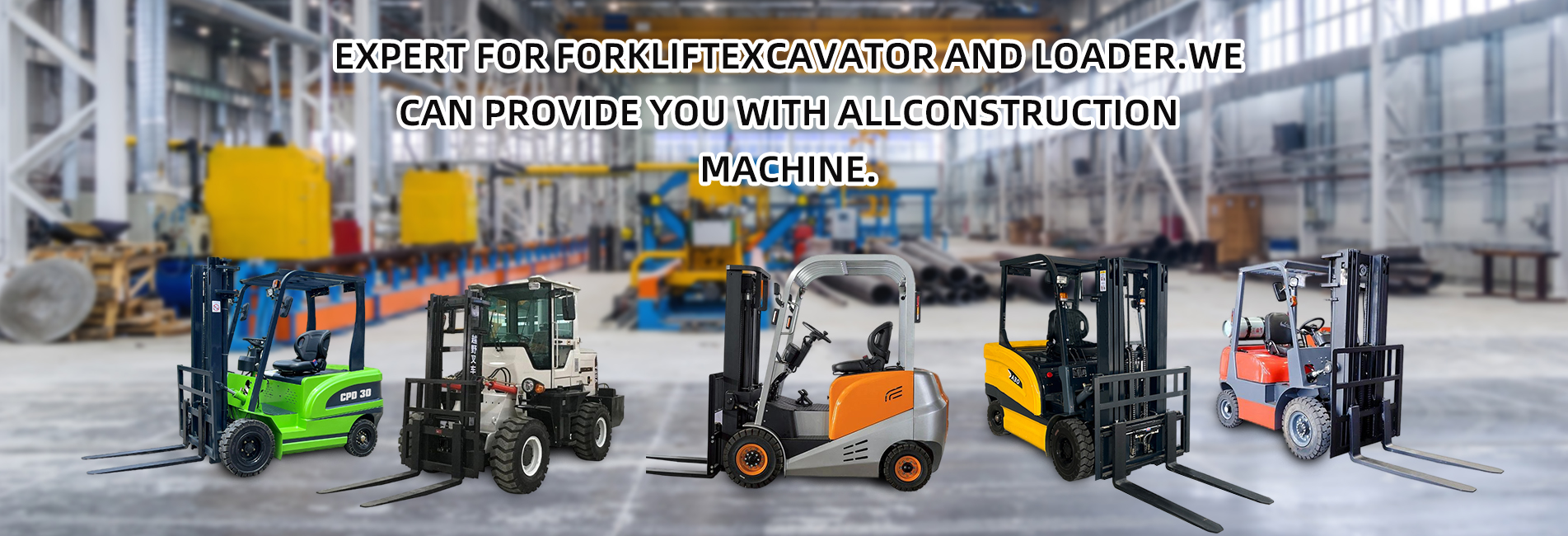Non standard forklifts, also known as non-standard forklifts, are handling equipment customized according to specific needs and widely used in special industries and complex working conditions. Compared to standard forklifts, non-standard forklifts are usually more expensive due to their unique design and functionality. This article will analyze in depth the factors influencing the price of non-standard forklifts, reveal the fundamental reason why they are more expensive than standard forklifts, and provide reference for procurement decisions.
1、 Definition and characteristics of non-standard forklifts
Non standard forklifts are forklifts tailored to specific scenarios, goods, or operational needs. Compared to standard forklifts, their features include:
1. Highly customized: Adjust the size, load capacity, accessories or functions according to customer needs.
2. Complex design: involving special structures, materials, or intelligent systems.
3. Small batch production: unable to achieve large-scale production like standard forklifts.
These characteristics directly result in higher design, production, and maintenance costs for non-standard forklifts compared to standard forklifts. The following are the five key factors that affect the price of non-standard forklifts.

2、 Analysis of Price Influencing Factors
1. Customized design cost
The design of non-standard forklifts needs to be developed from scratch and personalized according to customer needs:
Requirement analysis: Manufacturers need to have in-depth communication with customers to understand the working conditions, product characteristics, and efficiency requirements, which requires time and manpower.
Engineering design: including 3D modeling, structural mechanics analysis, stability testing, etc., requires support from a professional engineering team.
Prototype testing: Customized forklifts typically require the production of a prototype and on-site testing to ensure performance and safety, increasing initial investment.
Why is it more expensive? Standard forklifts adopt mature modular design, and the design cost is shared among large-scale production, rather than the design cost of non-standard forklifts being borne by a single customer.
2. Special materials and components
Non standard forklifts are commonly used in special environments such as high temperature, low temperature, and corrosive environments, requiring the use of high-performance materials or components:
High/low temperature resistant materials: For example, cold storage forklifts require low-temperature batteries and stainless steel bodies, while metallurgical industry forklifts require high-temperature resistant tires and steel.
High strength structure: Overloaded forklifts require reinforced frames and gantries, using high-strength alloy steel.
Specialized accessories such as grippers, turntables, or customized forks have complex manufacturing processes and high costs.
Why is it more expensive? The procurement cost of special materials and components is much higher than that of general materials for standard forklifts, and suppliers may need to produce them separately.
3. Complex production processes
The production of non-standard forklifts cannot rely entirely on automated assembly lines:
Small batch production: Non standard forklifts are usually produced according to orders, lacking economies of scale and high unit production costs.
Manual assembly: Some customized components require manual welding, assembly, or debugging, increasing labor costs.
Quality control: Non standard forklifts require stricter testing procedures to ensure performance and safety.
Why is it more expensive? Standard forklifts reduce costs through standardized production and bulk procurement, while personalized production of non-standard forklifts leads to cost increases.
4. Power and intelligent system upgrade
Non standard forklifts often require special power systems or intelligent functions:
Power systems, such as explosion-proof motors, low-temperature batteries, or hybrid systems, are much more expensive than standard electric or internal combustion systems.
Intelligent functions such as automatic navigation (AGV), RFID recognition, weighing systems, or remote control require the integration of complex software and hardware, resulting in high development costs.
Customized software: Smart forklifts may require customized scheduling systems or integration with warehouse management systems, increasing software development costs.
Why is it more expensive? Standard forklifts use universal power and control systems, while customized systems for non-standard forklifts require additional research and testing.
5. After sales and maintenance costs
The after-sales service and maintenance costs of non-standard forklifts have also pushed up the overall price:
Non standardization of accessories: Customized components are difficult to use universally and need to be produced or stocked separately, increasing accessory costs.
Professional maintenance: The complex structure and system of non-standard forklifts require professional technicians to maintain, and the service cost is high.
Training needs: Operators may require additional training to adapt to special functions, increasing implicit costs.
Why is it more expensive? The parts and maintenance services of standard forklifts have a high degree of marketization, low cost, and easy accessibility, while the maintenance system of non-standard forklifts is more complex.
3、 How to control the cost of non-standard forklifts?
Although non-standard forklifts are expensive, cost optimization can be achieved through the following methods:
1. Clarify core requirements: avoid excessive customization, focus on necessary functions, and reduce unnecessary complex designs.
2. Choose modular design: Make the most of the manufacturer's existing modules to reduce design and production costs.
3. Compare multiple suppliers: Choose a brand with rich experience in non-standard forklifts, such as U-Fly, to obtain better quotes.
4. Consider the full lifecycle cost: choose energy-saving power systems or durable materials to reduce long-term maintenance costs.
5. Mass customization: If the demand is large, we can negotiate with the manufacturer for mass production to share the cost.
4、 Why choose non-standard forklifts?
Despite its high price, non-standard forklifts still have irreplaceable advantages:
1. Efficient matching requirements: Solve special working conditions that standard forklifts cannot handle, such as oversized cargo, narrow spaces, or extreme environments.
2. Improve efficiency: Customized features (such as automation or specialized accessories) significantly improve handling efficiency and reduce labor costs.
3. Safety assurance: Targeted design (such as explosion-proof and anti-skid) enhances operational safety and reduces the risk of accidents.
5. Investment return: The high initial investment of non-standard forklifts is usually rewarded through efficiency improvement and long-term stable operation, especially in high-frequency or high-risk scenarios.
5、 Summary
The price of non-standard forklifts is higher than that of standard forklifts, mainly due to customized design, special materials, complex production processes, power and intelligent system upgrades, and increased after-sales maintenance costs. These factors collectively drive up the manufacturing and operating costs of non-standard forklifts. However, by clarifying requirements, optimizing designs, and selecting reliable suppliers, companies can effectively control costs while meeting special needs.


